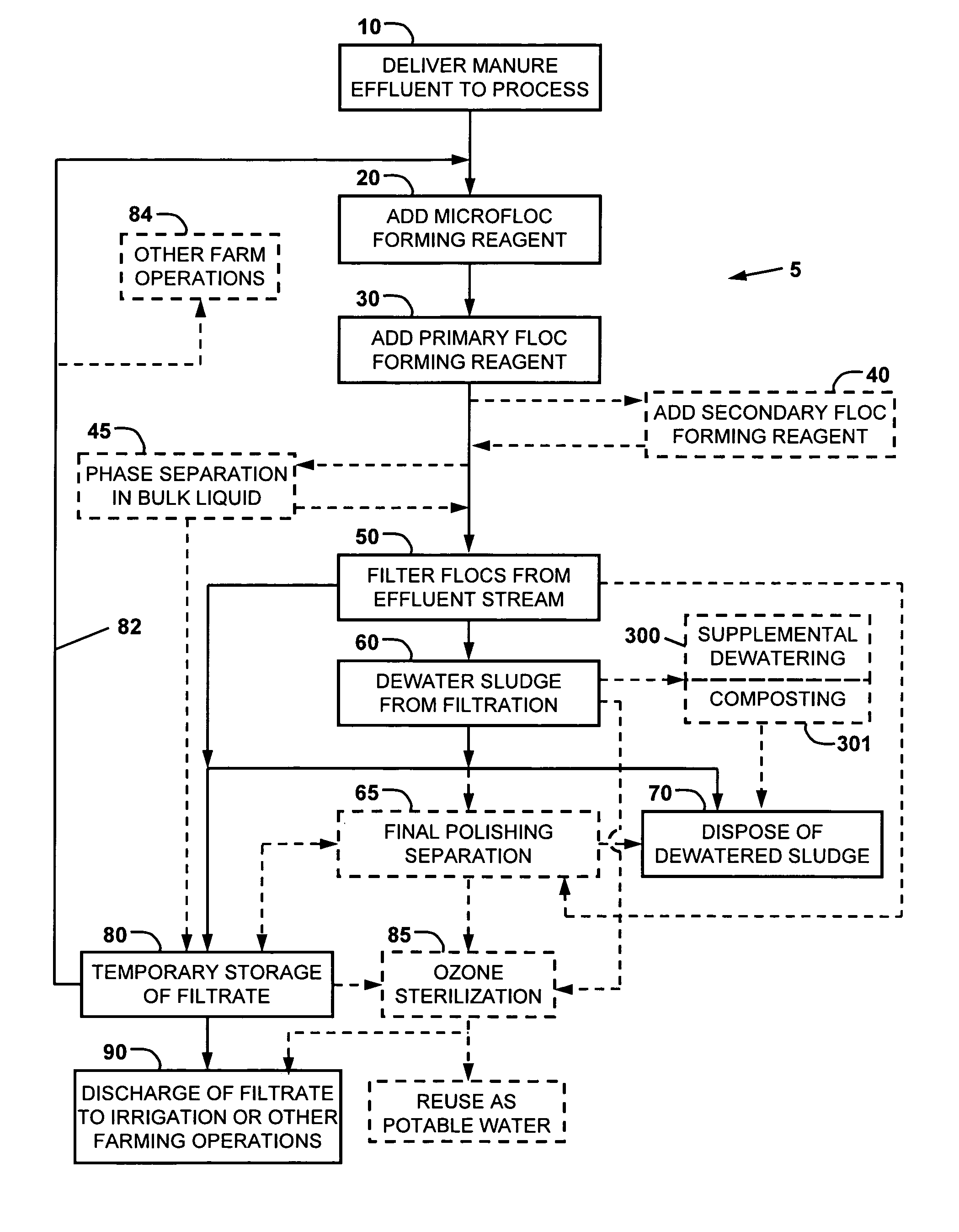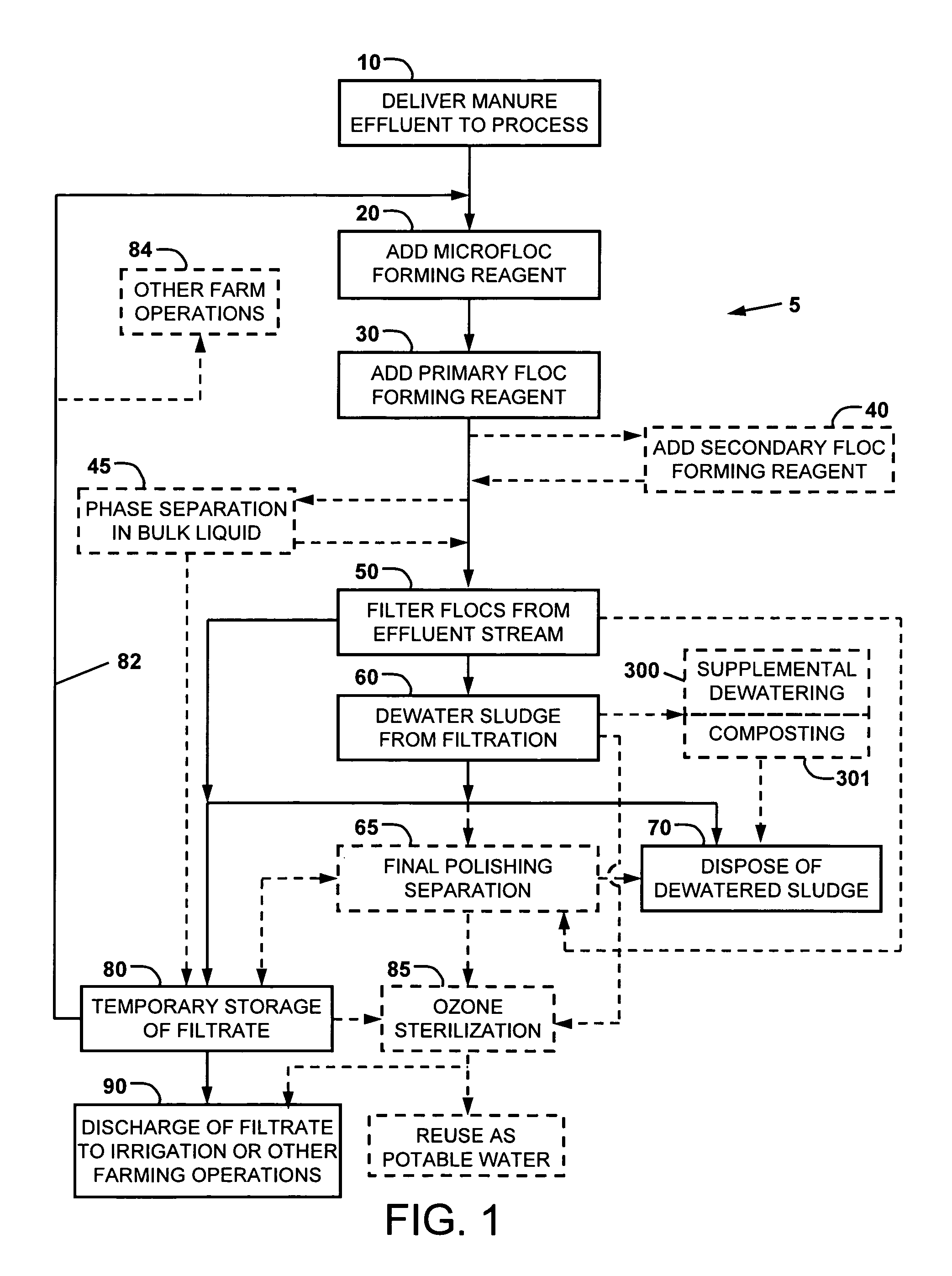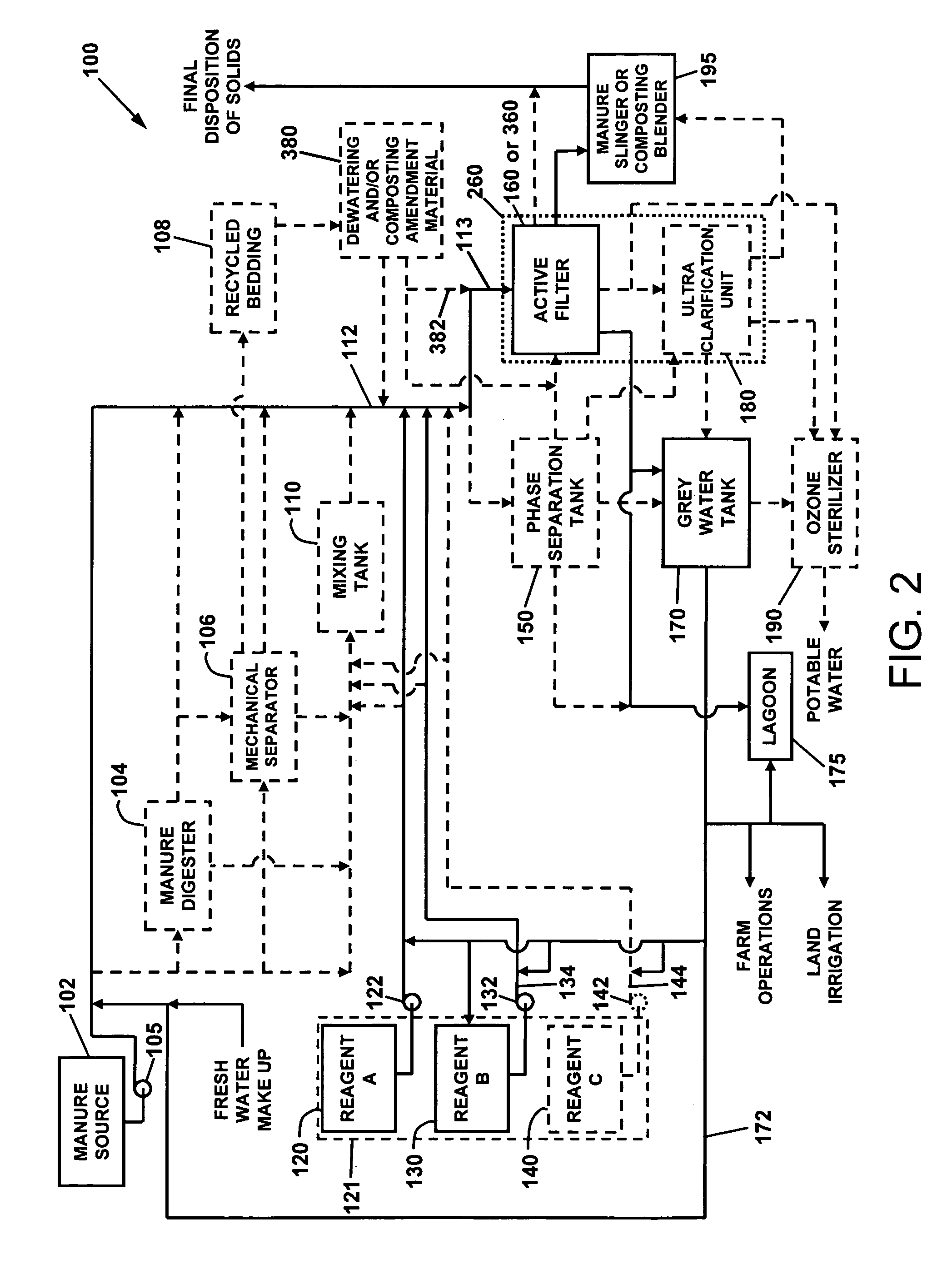Method for treatment of agricultural waste
a technology for agricultural waste and treatment methods, applied in the direction of biological sludge treatment, filtration separation, separation processes, etc., can solve problems such as watershed contamination, and achieve the effects of reducing transportation costs, improving filtering clarity, and being more cost-effectiv
- Summary
- Abstract
- Description
- Claims
- Application Information
AI Technical Summary
Benefits of technology
Problems solved by technology
Method used
Image
Examples
Embodiment Construction
[0048]For a general understanding of the present invention, reference is made to the drawings. In the drawings, like reference numerals have been used throughout to designate identical elements. In describing the present invention, a variety of terms are used in the description. Standard terminology is widely used in animal waste treatment art.
[0049]In this specification, the terms “animal waste,”“manure waste,”“manure slurry,” and “manure solution” are used interchangeably, and are meant to indicate any liquid, solid, or semi-solid waste matter which contains animal manure. The waste matter to be treated typically includes both liquid and solid phases, wherein the solids phase material is comprised of digested and undigested solid particles of animal feed (hay, grasses, grains, etc.) having a range of sizes. From a rheological standpoint, the bulk waste matter may behave generally as a liquid, i.e. it easily deforms irreversibly under a small amount of shear. The waste matter may b...
PUM
| Property | Measurement | Unit |
|---|---|---|
| Fraction | aaaaa | aaaaa |
| Percent by mass | aaaaa | aaaaa |
| Percent by mass | aaaaa | aaaaa |
Abstract
Description
Claims
Application Information
 Login to View More
Login to View More - R&D
- Intellectual Property
- Life Sciences
- Materials
- Tech Scout
- Unparalleled Data Quality
- Higher Quality Content
- 60% Fewer Hallucinations
Browse by: Latest US Patents, China's latest patents, Technical Efficacy Thesaurus, Application Domain, Technology Topic, Popular Technical Reports.
© 2025 PatSnap. All rights reserved.Legal|Privacy policy|Modern Slavery Act Transparency Statement|Sitemap|About US| Contact US: help@patsnap.com



